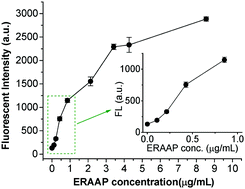A peptide-based fluorescent probe images ERAAP activity in cells and in high throughput assays†
Abstract
ERAAP is an intracellular amino-peptidase that plays a central role in determining the repertoire of peptides displayed by cells by MHC class I molecules, and dysfunctions in ERAAP are linked to a variety of diseases. There is therefore great interest in developing probes that can image ERAAP in cells. In this report we present a fluorescent probe, termed Ep, that can image ERAAP activity in live cells. Ep is composed of a 10 amino acid ERAAP substrate that has a donor quencher pair conjugated to it, composed of BODIPY and dinitro-toluene. Ep undergoes a 20-fold increase in fluorescence after ERAAP cleavage, and was able to image ERAAP activity in cell culture via fluorescence microscopy. In addition, we used Ep to develop a high throughput screen for ERAAP inhibitors, and screened an electrophile library containing 1460 compounds. From this Ep based screen we identified aromatic alkyne-ketone as a lead fragment that can irreversibly inhibit ERAAP activity. We anticipate numerous applications of Ep given its unique ability to image ERAAP within cells.



 Please wait while we load your content...
Please wait while we load your content...